A Sam Altman-backed startup is betting it can crack the code on fusion energy. Here's how it's trying to bring that to the masses by 2028.
Story by bnguyen@insider.com (Britney Nguyen) • June 3.2023
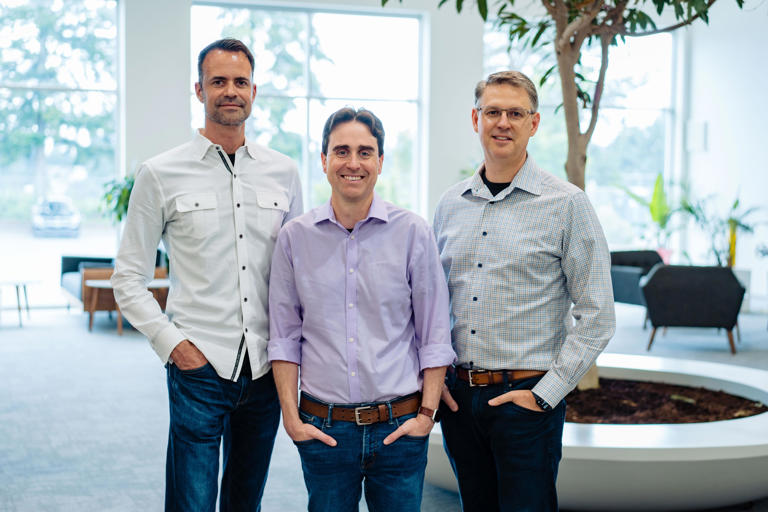
Helion’s co-founders: Chris Pihl, chief technology officer (left), David Kirtley, chief executive officer (middle), and George Votroubek, director of research (right). © Helion Energy
Helion Energy wants to produce large amounts of electricity through fusion by 2028.
Microsoft has agreed to buy 50 megawatts of electricity from Helion, which can power 40,000 homes.
Helion's chief business officer talked to Insider about how the company plans to make fusion energy.
The race is on for clean energy company Helion Energy to build a fusion power plant capable of producing enough electricity for tech behemoth Microsoft in five years.
Microsoft in May agreed to buy 50 megawatts of electricity from Helion by 2028, which is enough to power around 40,000 homes.
Even OpenAI CEO Sam Altman is enthusiastic for the potential of fusion energy and Helion, previously saying he's "super excited about what's going to happen there." Altman invested $375 million into the company in November 2021, leading its Series E round.
Fusion energy could be used to power data centers, which are large consumers of electricity, Scott Krisiloff, Helion Energy's chief business officer, told Insider.
But despite the enthusiasm and promises of fusion energy, it's incredibly hard to produce. In particular, it's difficult to get up to the temperature needed to produce electricity from fusion. Helion claims its the first private fusion company to have built technology capable of reaching that temperature.
"As our population has grown and required more information, and more connectedness to the internet, the energy needs of our population grow as well," Krisiloff said.
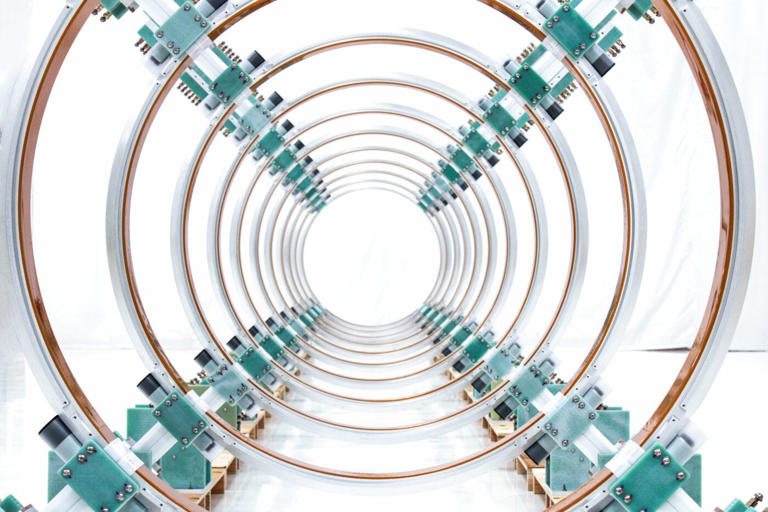
Electromagnetic coils that will be used in Helion's seventh fusion energy prototype, Polaris.
Krisiloff said Helion is currently working on its seventh prototype, Polaris, that is expected to be completed in 2024, and would be the first to produce electricity from fusion.
"Fusion is something that we utilize every day; all of our energy traces back to fusion in some way," Krisiloff said. "But we've never been able to harness it on Earth in a way that we can produce electricity from it."
Fusion energy is created in a 40-foot long tube
Fusion happens when two atoms come together, forming a single atom, and is is how the sun and stars make energy.
Helium-3 is produced by fusing deuterium in Helion's plasma accelerator.
For its reaction, Helion takes two materials, deuterium, a form of hydrogen found in water, and helium-3 and puts them in a 40-foot-long tube. Inside, the materials are compressed until they reach 100 million degrees Celsius.
That's when the conditions are right to produce electricity, Krisiloff said. Helion's sixth and latest prototype called Trenta, has been able to exceed 100 million degree celsius temperatures, according to Krisiloff.
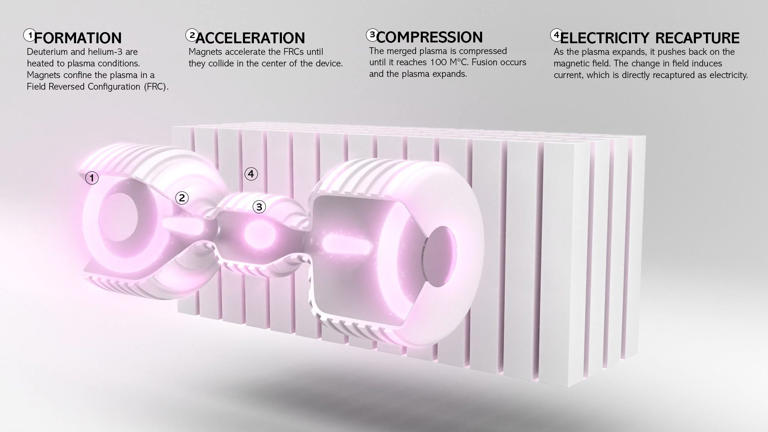
A graphic explaining how Helion's fusion energy technology works.
"That is one cycle of the machine, and then you pulse it over and over in order to get more energy out," Krisiloff said.

A gif depicting two plasmas merging inside Trenta, Helion’s sixth fusion prototype.
Fusion could be a better source of clean energy than wind and solar
Krisiloff said what makes fusion energy promising is that there are abundant fuel sources for it.
"The fuel comes from water in the form of deuterium, which is found abundantly on Earth," Krisiloff said.
Another benefit of fusion is that it's safer, Krisiloff said, compared to other forms of energy such as nuclear energy, or fission, which is a chain reaction. That means if something happens to the machine producing fusion energy, it will shut down immediately.
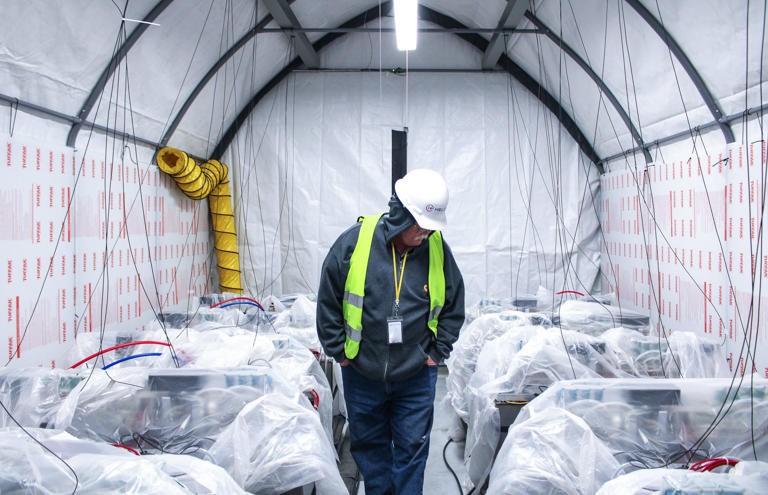
An electrical engineer preparing for Helion’s next pulsed power test.
Krisiloff said fusion also produces limited amounts of waste during the process compared to traditional fission, which is when atoms are split apart, creating unstable nuclei, some of which can be radioactive for millions of years, according to the International Atomic Energy Agency.
Fusion can produce energy without emitting carbon, Krisiloff said. It also requires the lowest amount of demand on a power grid over time.
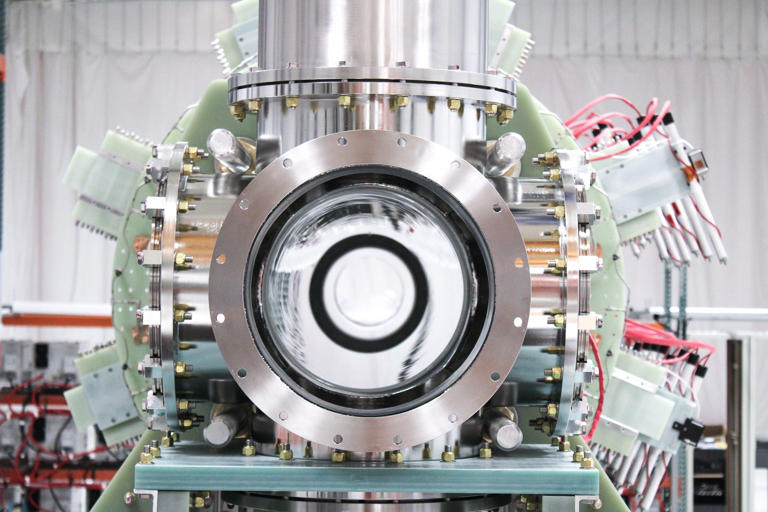
Polaris, a prototype fusion reactor from Helion, which recently announced a deal with Microsoft to provide the tech giant with electricity produced from fusion.
Krisiloff said what makes fusion energy promising is that there are abundant fuel sources for it.
"The fuel comes from water in the form of deuterium, which is found abundantly on Earth," Krisiloff said.
Another benefit of fusion is that it's safer, Krisiloff said, compared to other forms of energy such as nuclear energy, or fission, which is a chain reaction. That means if something happens to the machine producing fusion energy, it will shut down immediately.

An electrical engineer preparing for Helion’s next pulsed power test.
Krisiloff said fusion also produces limited amounts of waste during the process compared to traditional fission, which is when atoms are split apart, creating unstable nuclei, some of which can be radioactive for millions of years, according to the International Atomic Energy Agency.
Fusion can produce energy without emitting carbon, Krisiloff said. It also requires the lowest amount of demand on a power grid over time.

Polaris, a prototype fusion reactor from Helion, which recently announced a deal with Microsoft to provide the tech giant with electricity produced from fusion.
Compared to other sources of clean energy, Krisiloff said fusion is the most energy dense, meaning it can happen in a confined space, and doesn't need large amounts of land and space required by solar and wind power. It's also more reliable than wind and solar power, because it wouldn't be as impacted by extreme weather events, Krisiloff said.
No comments:
Post a Comment